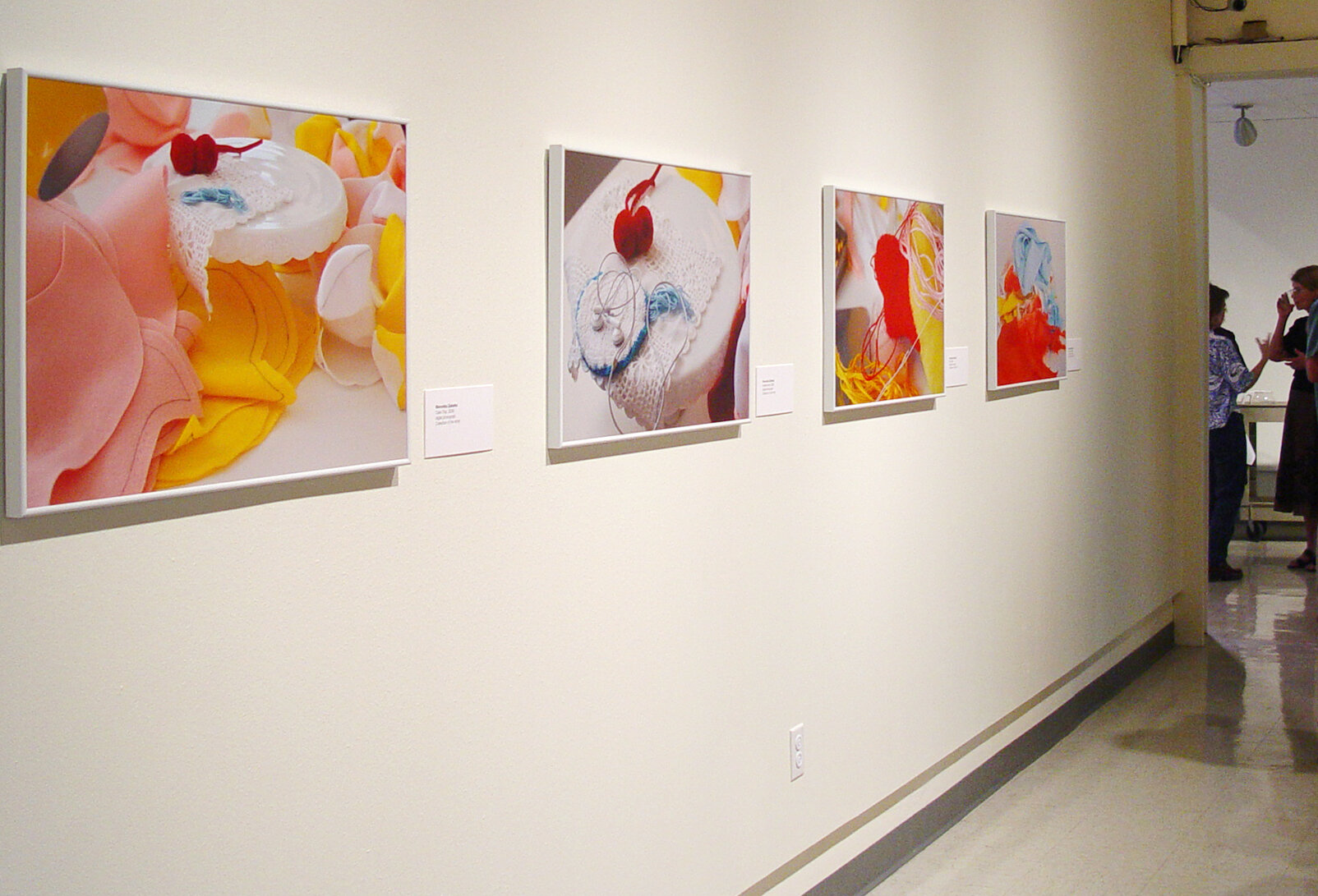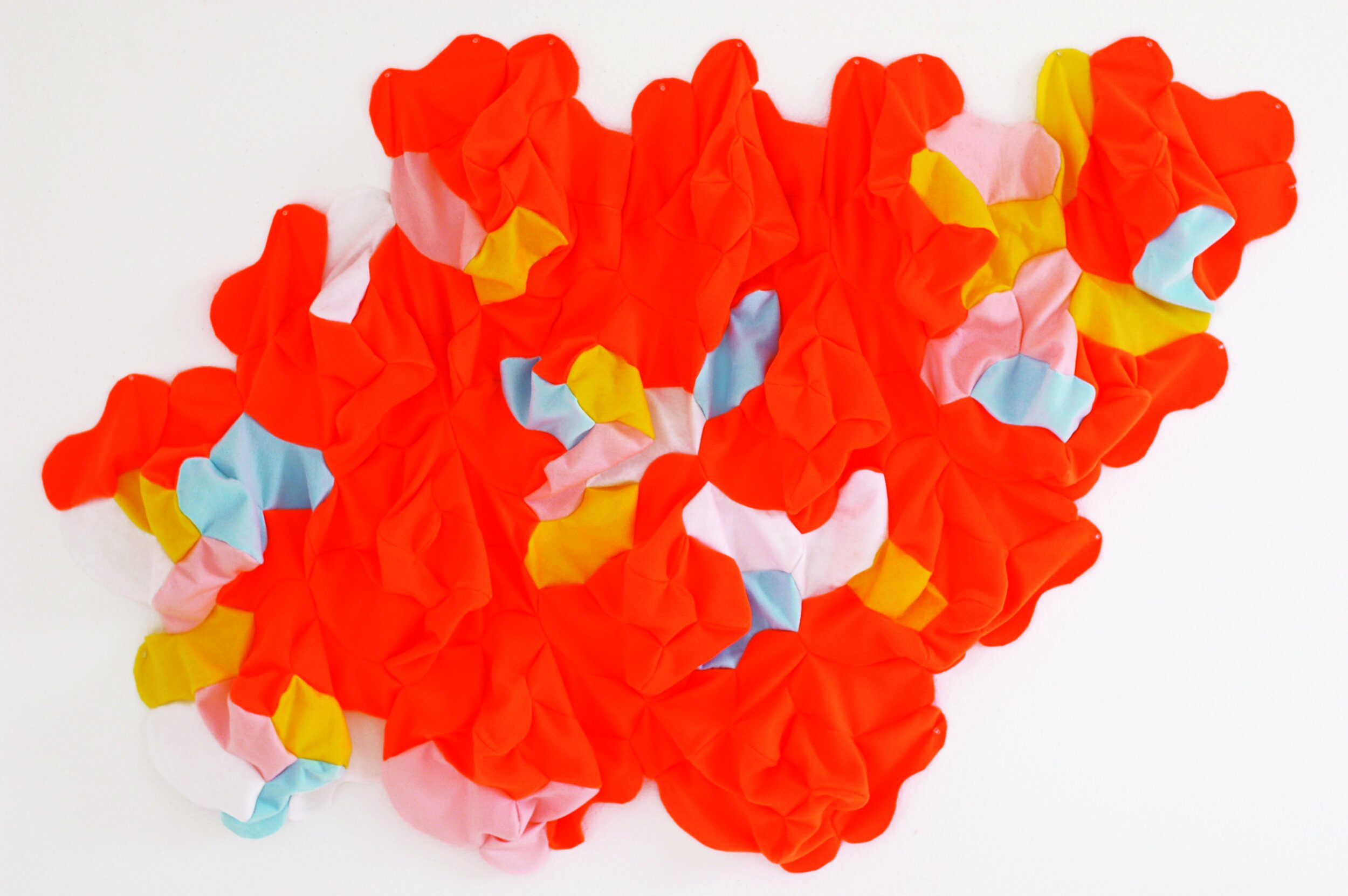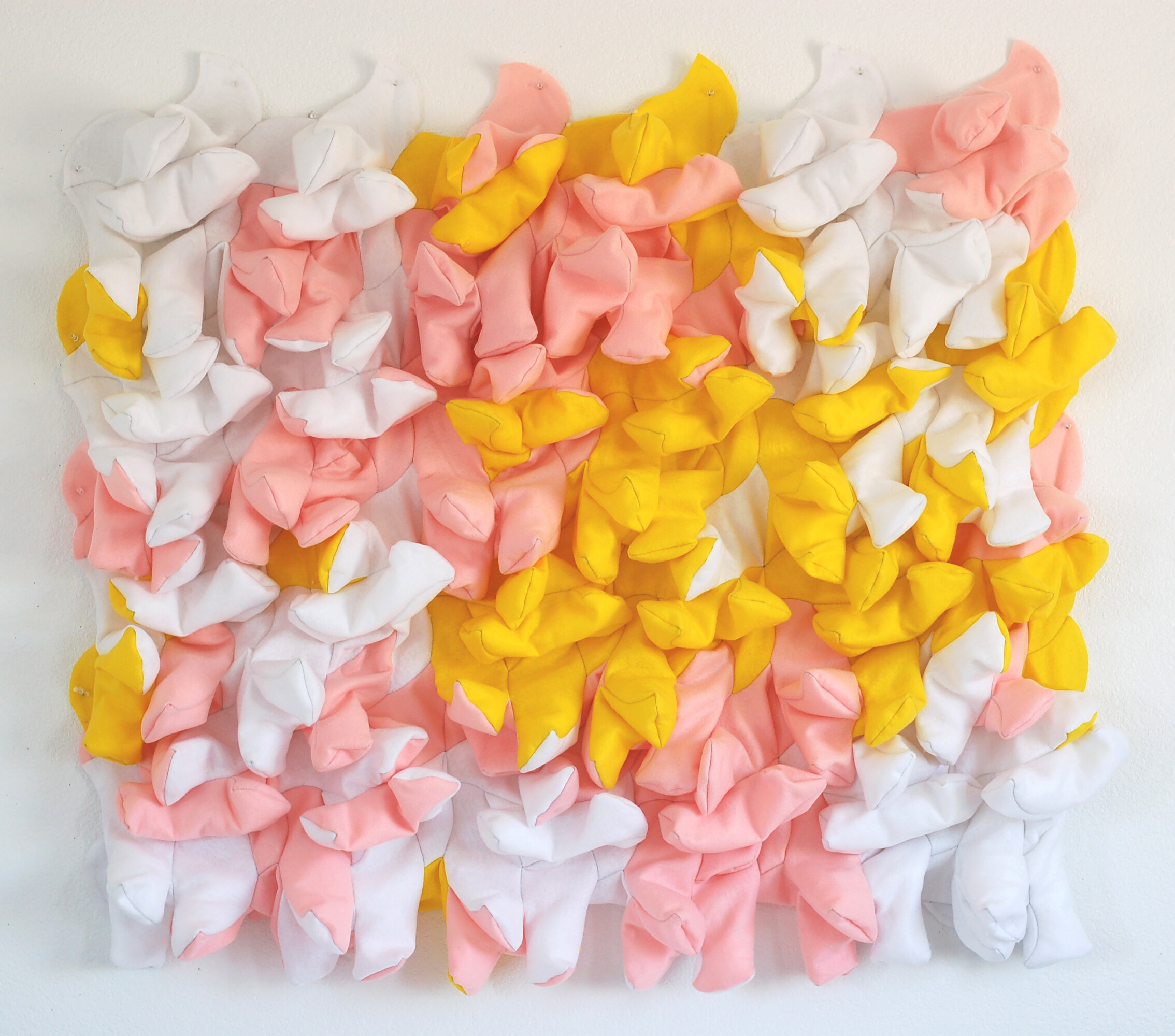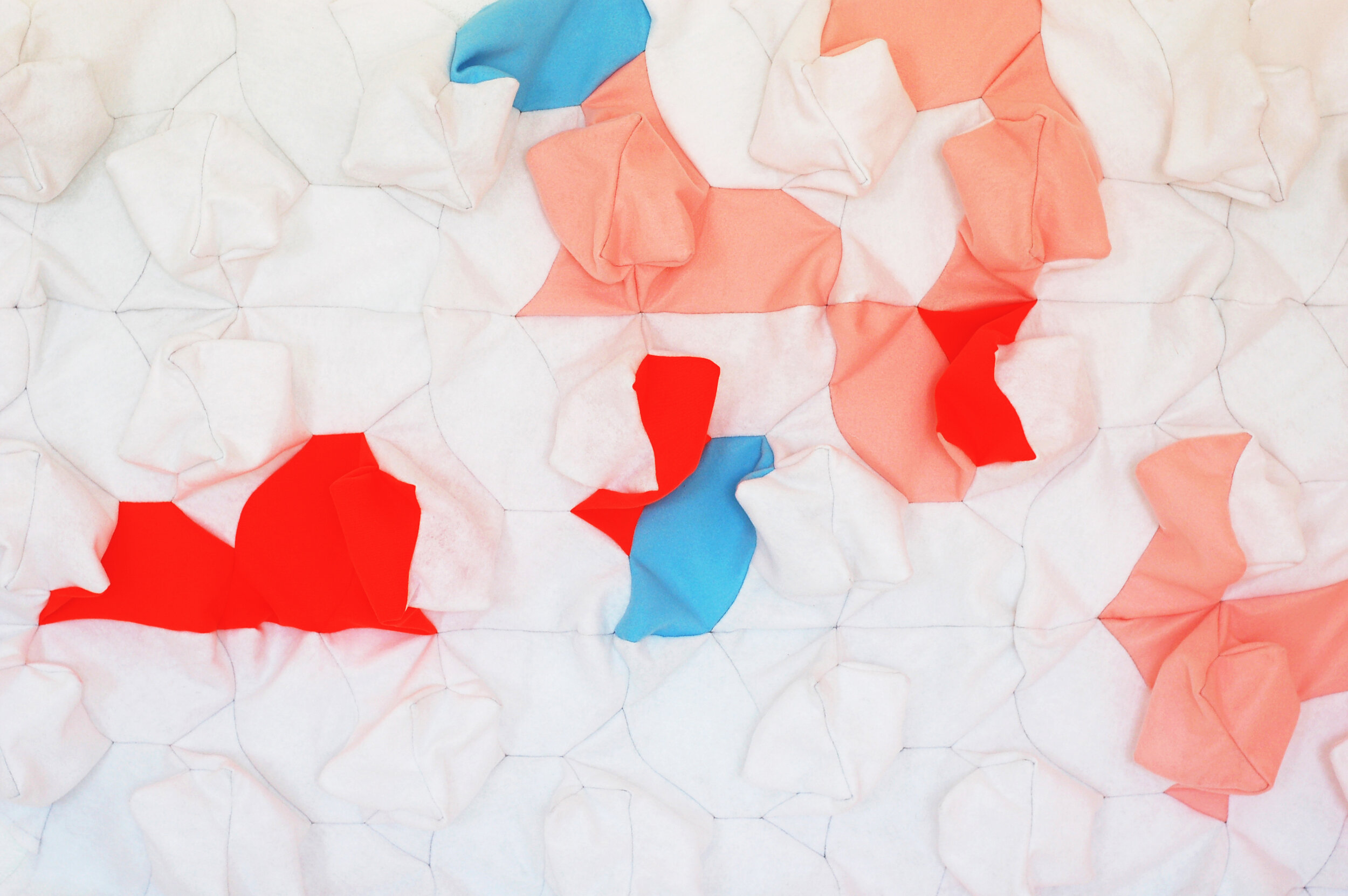AMoCA Collection | Cake Tray l, Photographic print, 19.5” x 29.5”, 2011
AMoCA Collection | Fluff Fake, Hand-sewn polyester, 8” x 24” x 18.5”, 2007
RAIR | 2007-08
Weronika Zaluska | San Jose, CA
Weronika Zaluska is a California-based sculptor and visual arts educator. She received an MFA from New York State College of Ceramics at Alfred University in 1999 and a BFA from Tufts University in 1997. Weronika has worked in many mediums, most notably clay, textiles and paper. She has exhibited in Boston, New York, as well as Los Angeles. In addition to RAiR, she has participated in several artist residencies, including Bemis Center for Contemporary Arts in Omaha, Nebraska and National Center for Sculpture in Oronsko, Poland. She currently lives in San Jose, California, where she focuses on establishing an Arts Integration curriculum at Almaden Country Day School. Weronika's recent work is characterized by reductive form and recurring patterns.
The naïve boundary between "me" and the "outside world" is my skin (and the lenses of my eyes) but, as we learn more about the way events in our own bodies can be inaccessible "to us", the great outside encroaches. Daniel C. Dennett, Consciousness Explained
The presence of the present only forms a surface, (…) only institutes itself as something face-to-face. Jacques Derrida, Dissemination
The concept of woven cloth is deeply embedded in our language. Originating from Latin fabricare ("to make"), the word "fabric" is often used to describe the world in terms of its substance, including the substance of thought and memories ("the fabric of work" or "the fabric of desire", etc). Because the act of weaving is chronological (progression from top to bottom), fabric carries a metaphor of history (Histots in Greek, among other meanings, also signifies "canvas").
In her current body of work, artist Weronika Zaluska uses inexpensive, lightweight cloth as a familiar "stand in" for other substances, in order to trigger a wide variety of perceptual sensations within the human body. The colorful, whipped-up layers of the soft and airy wall hangings are reminiscent of desserts, such as meringue pie or custard. Hinting at such sweets, the artist brings the viewer to a delectable sense of alertness, where attention to an object becomes intimate and sensuous. Zaluska is interested in the perceptual area in which cloth references desserts and other food-like surfaces used in art, such as textured paint or cake-like plaster. It is a place where fabric poses as a ready-to-be-filled blank, playfully borrowing the characteristics of other mediums, without attempting literal imitation. It is there that references to daily life and to art merge together.
A pursuit of seamlessness between lifestyle and art-making is essential to Zaluska's work. Through a daily practice of meditation and yoga, as well as readings on neuroscience, she has been examining the relationship between bodily senses (the "inside") and the environment (the "great outside"). The resulting body of work focuses on perception as a resurfacing layer of "right now", as well as on the chronological progression of how perception is "built" over time. The viewer comes face to face with the light-weight, bubbling fabric surfaces, revealing themselves before one's senses just like subsequent layers of present moment "pealing off" and coming to the top.
In this work, the mutable textured fabric surface begs to be reinvented through new interpretations and substitutions, like a chameleon, changing its colors depending on who is looking and when. It represents perception as something that has a life of its own, independent from reality.







